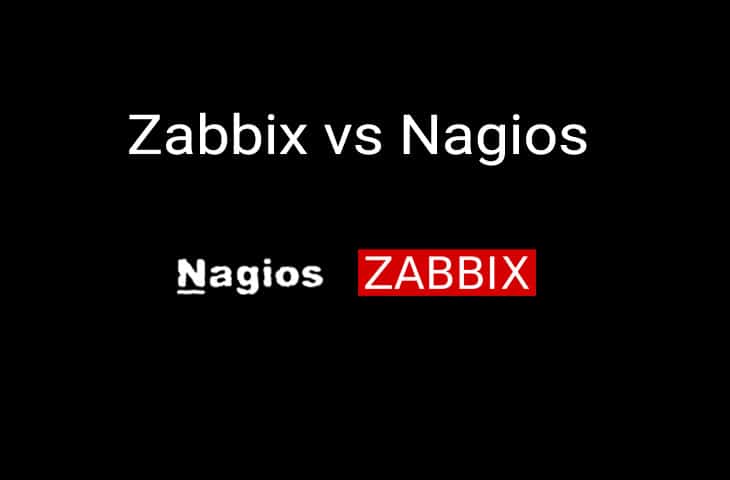The debate between Zabbix vs Nagios is a topic that comes up quite often between IT professionals, and the subject is valid. Both of these tools have made it into our Top Network Monitoring Software Page and are all around great tools for those looking for an Open-source Network Monitoring Solution!
Anyone that has to manage systems for a living should always be looking to innovate, especially if they are looking to keep all of their vital systems running day and night. We’ll take a look at these two great products and see how they stack up against one another. Let’s dive in!
Zabbix
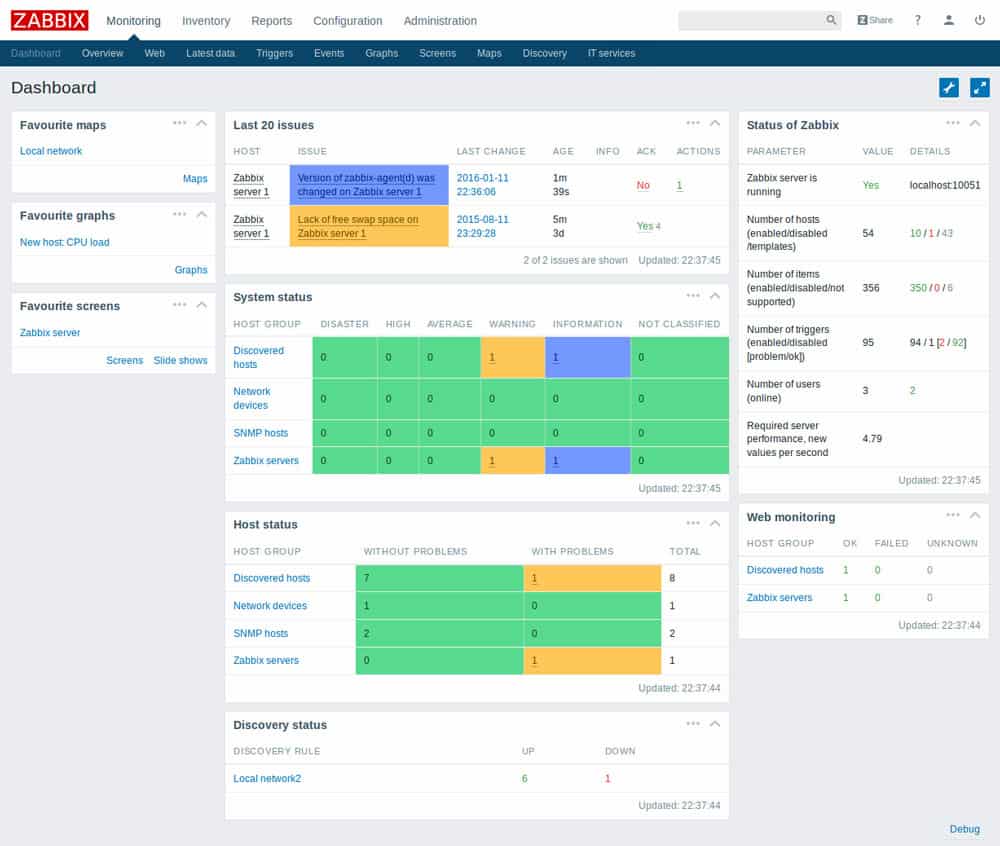
Zabbix prides themselves on being a scalable platform that is both mature and robust, meaning that it will always be running in the background, rain or shine. There is a massive reporting and data collection portion of this application, meaning that almost any event or data point that you wish to measure will be at your fingertips.
Scale is probably one of the biggest selling points of this solution, especially if you are an enterprise client. Zabbix can handle thousands of concurrent devices and you can apply as many custom monitoring scripts to them as you need, customizability is the name of the game.
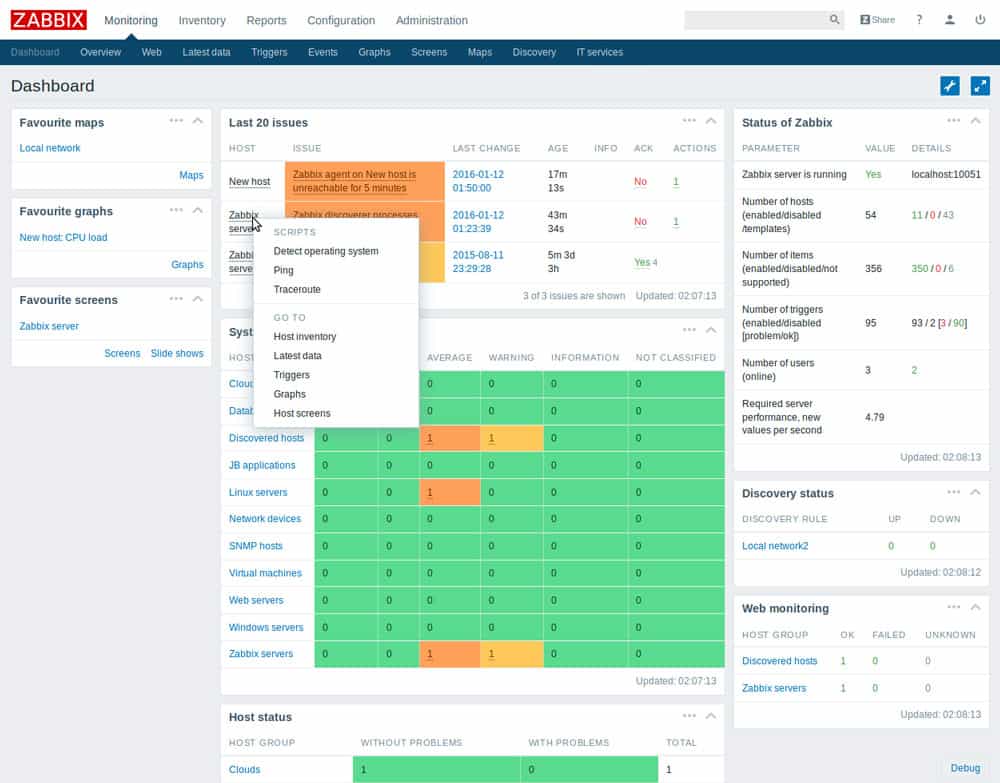
Zabbix offers a multi-platform agent that does all of the hard work behind the scenes, relaying information back to the server installation.
The agent uses a mixture of SNMP and IPMI agents to achieve this, meaning that all of your system specs can be relayed quickly, easily and efficiently from a system resource perspective.
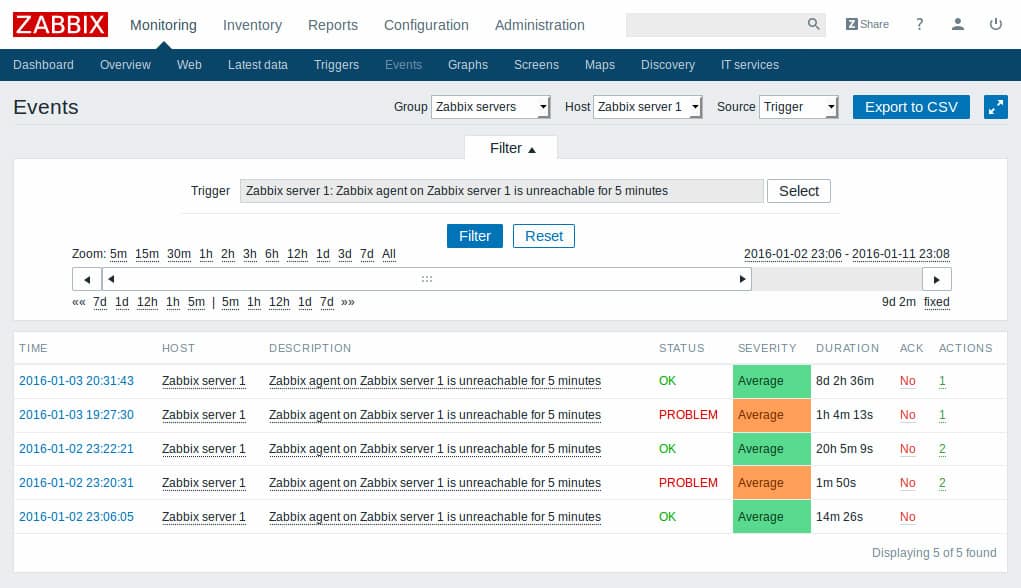
Zabbix can monitor Cloud services, Containers, Virtual machines, hardware, services, databases, applications and more, from one convenient console.
Pros:
- Open-source transparent tool
- Uses both SNMP and ICMP for a broader monitoring range
- Can detect new devices and configuration changes immediately
- Offers useful templates for quick insights
- Robust notification system supports SMS, email, custom script, and webhook
Cons:
- The interface isn’t as intuitive as solutions such as DataDog or Site24x7
- Would like to see better-alerting features, specifically related to reducing false positives
Because Zabbix is free and open source, there is a lot of room for integration via their API, which is great news for application builders!
Zabbix can be downloaded from here!
Nagios XI
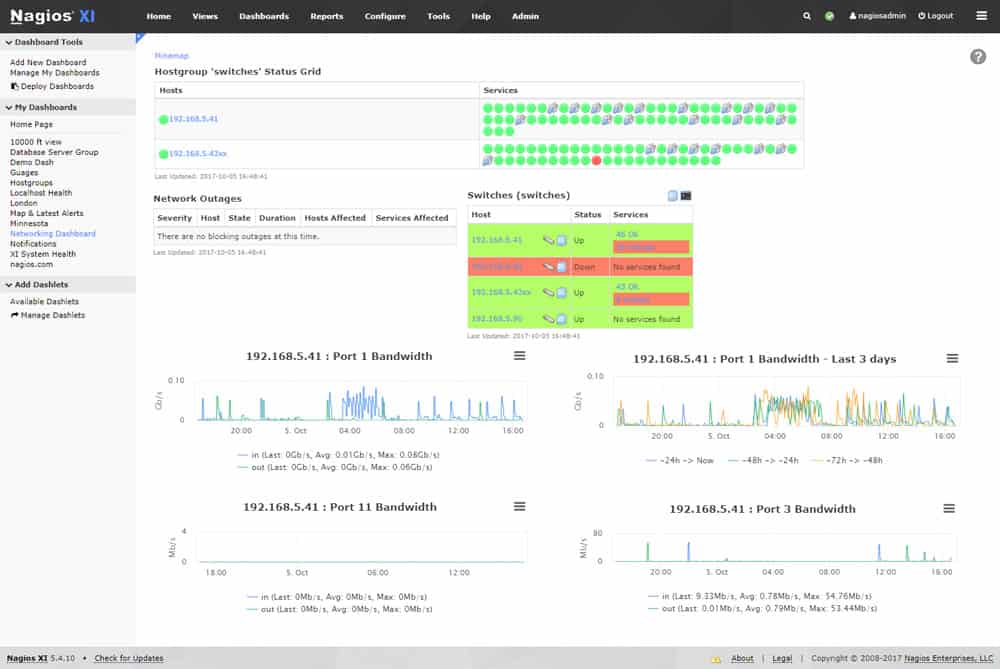
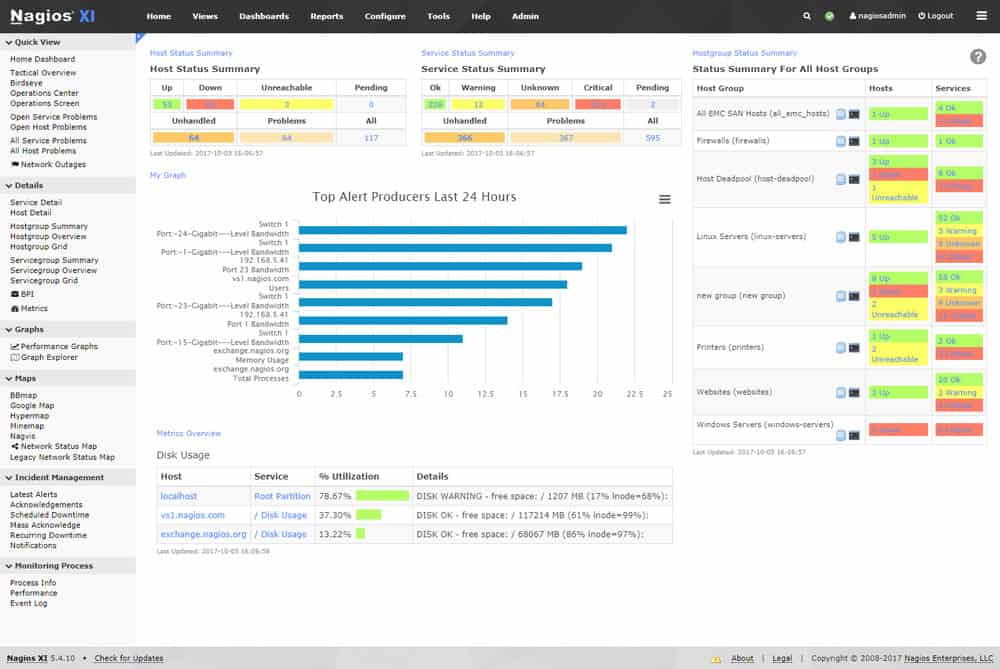
Nagios offers many different solutions to you, based on your specific requirements, and in this instance we will be looking at Nagios XI. Check out our other comparison review for Nagios Core vs Xi. It is their most powerful IT infrastructure monitoring and Systems Management Software suite to date, and features an effective alert system to let you know when any of your device have failed.
Nagios goes beyond the basics of IT monitoring and provides you and your organization with analytic insights that let you know when something is not working properly on your network.
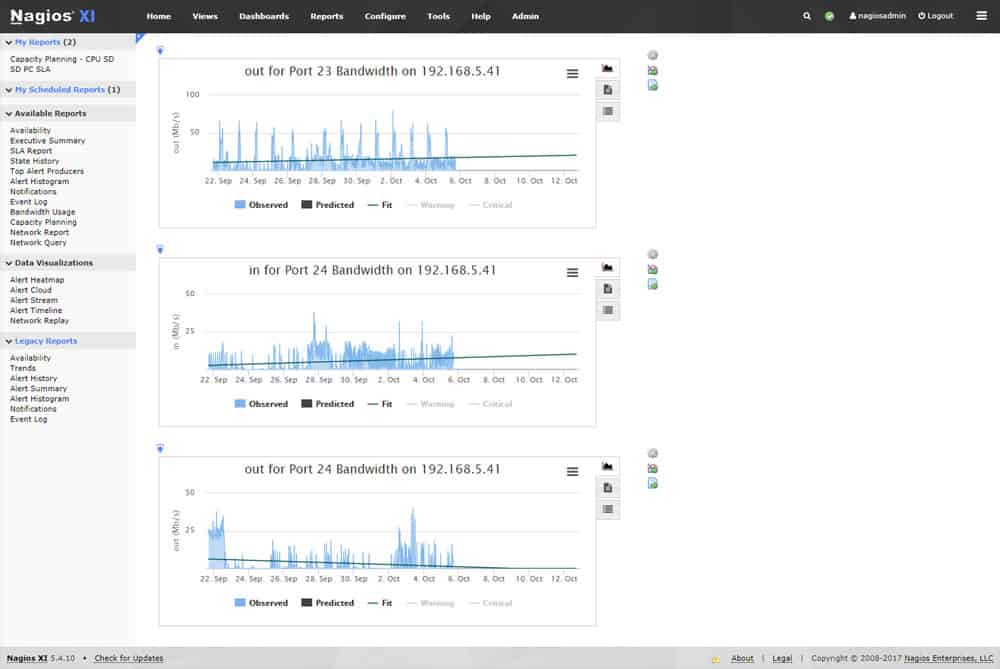
It has been designed to be both powerful and easy to use, giving your whole team the tools that they need to actively monitor systems and networks without needing to learn an entirely new interface, it is all web-based, and customizable depending on what you want to monitor.
Mission-critical systems are the backbone of your organization, so Nagios offers application, service, OS, network protocol monitoring functionality, ensuring that you are never caught off guard if any systems happen to go offline.
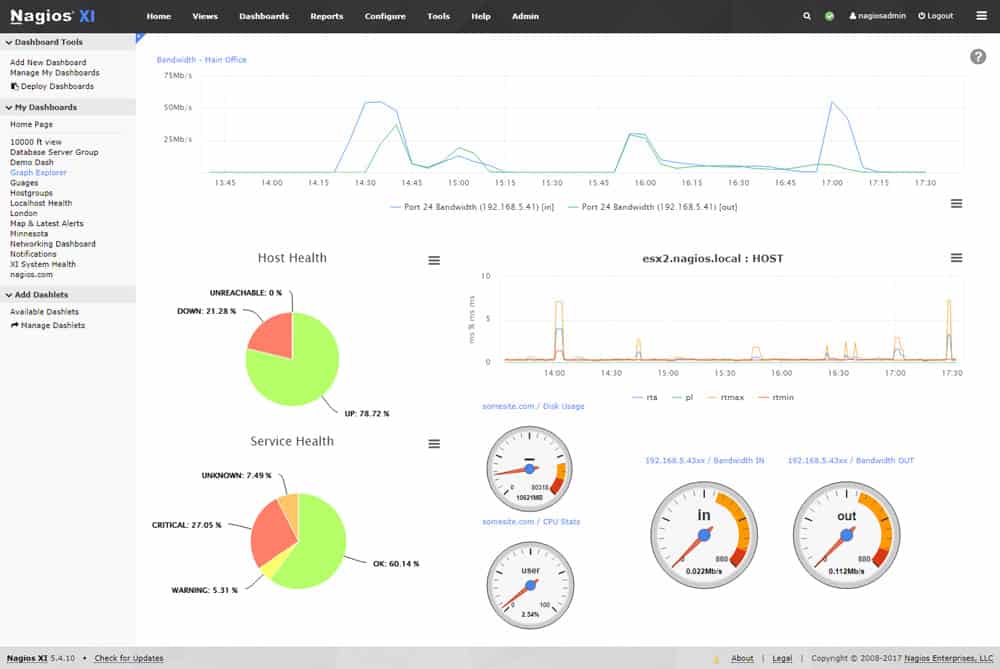
Pros:
- Open-source transparent tool
- Simple, yet informative interface
- Flexible alerting options support SMS and email
- Robust API backend makes it a great option for developers who want to integrate their own custom applications
- Very generous two-month trial period
Cons:
- Open-source version lacks quality support found in paid products
- Installation can be technical and complex
Below we'll look at the most popular features of each and see if they either support it or not.
Zabbix vs Nagios: What are the Main Differences?
| Zabbix | Nagios | |
| Network Scanning, Auto Discovery, Mapping &Visualization Maps | ✔ | ✔ |
| WMI ICMP SNMP | ✔ | ✔ |
| DB Functionality and Alerts | ✔ | ✔ |
| SLA Monitoring | ✔ | ✔ |
| Hardware Monitoring | ✔ | ✔ |
| Web Server Monitoring | ✔ | ✔ |
| Active Directory Alerts and Monitoring | ✔ | ✔ |
| Reports and Graphs of Historic Trends | ✔ | ✔ |
| Smart Device App: iOS, Android | ✔ (outdated) | ✔ |
| Download Here | Download Here |
No solution is going to be absolutely perfect for your uses and environment, which is why customizability, flexibility and ease of use all play a massive role in deciding which product is better for your specific requirements.
But out of the two products, we’re sure that you’ll find just what you’re looking for in terms of features, ease of use and functionality.
Here we go.
Zabbix is a really compelling product, and it is almost unfair to include it in some ways, because it is absolutely free an open source, with a budding community of programmers and enthusiasts behind it.
It isn’t for everyone though, as support is a large part of an enterprise product, so while the application itself is free, the support is not. This means that you will need to pay for it if you feel that you are not able to support the product yourself.
Depending on the size and critical nature of your infrastructure, you might get away with supporting it yourself. Nagios is a great product, and while you pay for what you are getting, it also includes support as part of the package.
Depending on the setup of your organization, this might be more appealing to management as they have a single point of contact for this particular product. There is a free download that will give you full functionality for 60 days of Nagios XI, so this is a good way to trial the product.
There after you can decide on which pricing option suites your particular environment the best. Both of these products are fully comprehensive monitoring suites, and it would be tough to call an outright winner. Both have areas where one would be better than the other, like Zabbix’s API interoperability, and Nagios’s easy to setup and use installation.
Ultimately, if your pick is going to be based on your support needs and the need for your IT staff to be able to monitor remotely from a smart device such as Android or an iOS device, then Nagios could be the better option for you.
If however, you don’t need paid for support, you could do the same via Zabbix via mobile web browser. The best approach here is going to be that you download each one and see what works best for you, but if you are on a tight budget and don’t mind the lack of support, then Zabbix could be the free solution that you need to get your network and system visibility up to speed in no time.
For those with deeper pockets, the Nagios licensing quote page can be found here.
Happy monitoring and good luck!
Related Post: Cacti vs Nagios Comparison
Resources:
Additional Zabbix Features:
Auto-Discovery – https://www.zabbix.com/auto_discovery
Main Features – https://www.zabbix.com/features
Agent – https://www.zabbix.com/zabbix_agent
SNMP Agent – https://www.zabbix.com/snmp_ipmi_agent
Agentless Monitoring – https://www.zabbix.com/agentless_monitoring
Custom Solutions – https://www.zabbix.com/custom_monitoring
Aggregate Information – https://www.zabbix.com/calculated_and_aggregate
UX & Web Simulations – https://www.zabbix.com/web_scenarios
Additional Nagios XI features:
Nagios XI Features – https://assets.nagios.com/handouts/nagiosxi/Nagios-XI-Features.pdf
Zabbix vs Nagios FAQs
What are the key features of Zabbix?
The key features of Zabbix include real-time monitoring, alerting, event correlation, performance monitoring, visualization, reporting, and automation.
What are the key features of Nagios?
The key features of Nagios include real-time monitoring, alerting, event correlation, performance monitoring, visualization, reporting, and automation.
What is the difference between Zabbix and Nagios?
The main difference between Zabbix and Nagios is that Zabbix has more advanced features, such as event correlation, auto-discovery, and trend prediction, while Nagios is more focused on basic monitoring and alerting.
Is Zabbix or Nagios easier to use?
Zabbix can be more complex to set up and use than Nagios, as it requires more configuration and customization. Nagios has a simpler interface and is easier to use out of the box.
Which is better for large-scale environments, Zabbix or Nagios?
Zabbix is better suited for large-scale environments because of its scalability, distributed monitoring capabilities, and advanced features. Nagios can also be used for large-scale environments, but may require more configuration and customization.
Can Zabbix and Nagios be integrated with other tools?
Both Zabbix and Nagios can be integrated with other tools, such as ticketing systems, dashboarding tools, and automation platforms, through APIs and plugins.
Is Zabbix or Nagios more expensive?
Both Zabbix and Nagios are open-source and free to use. However, there may be additional costs associated with commercial versions of the software or support services.
Which is more popular, Zabbix or Nagios?
Zabbix is gaining popularity in recent years, but Nagios is still more widely used and has a larger user community.

